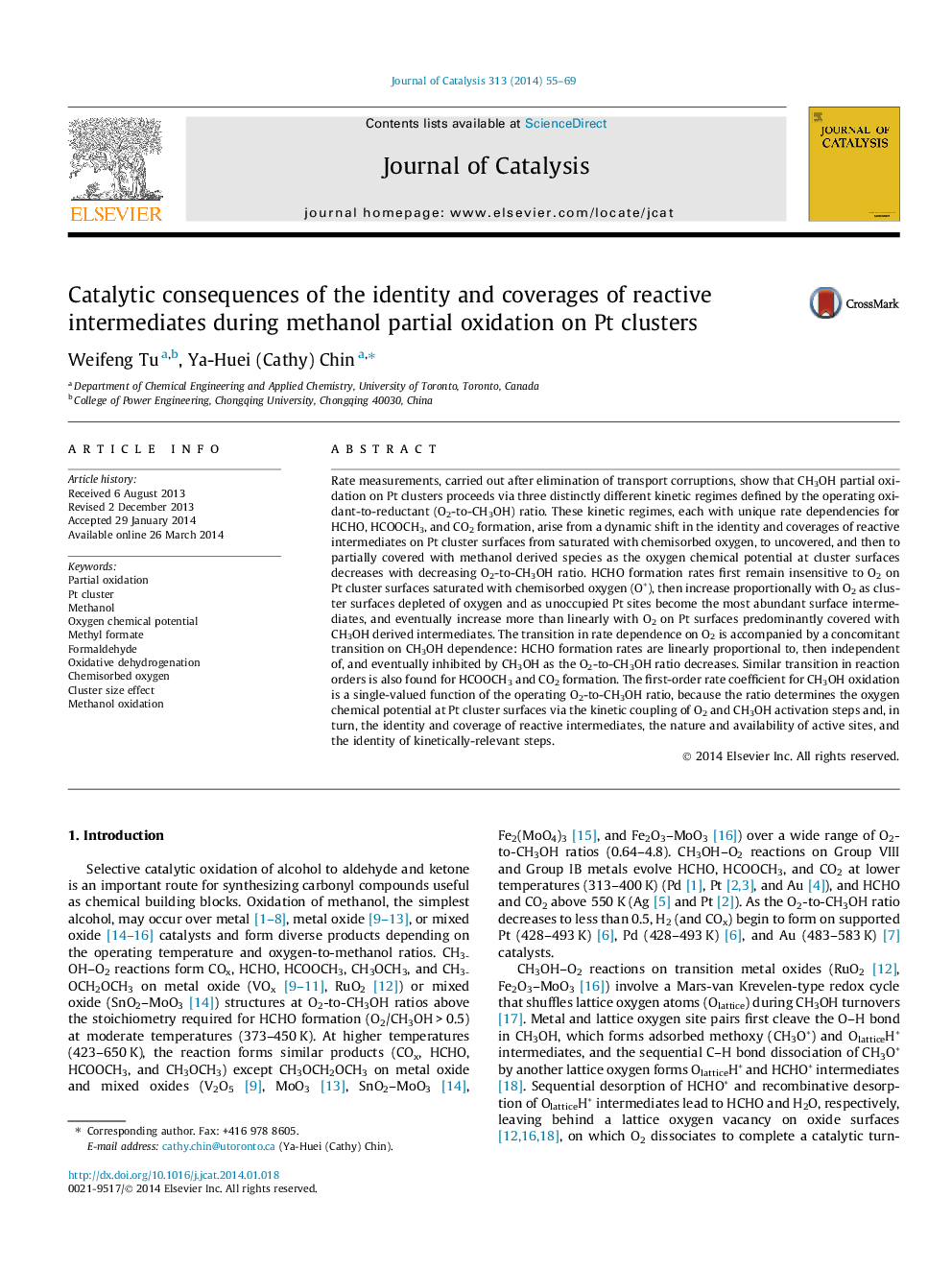| کد مقاله | کد نشریه | سال انتشار | مقاله انگلیسی | نسخه تمام متن |
|---|---|---|---|---|
| 61043 | 47562 | 2014 | 15 صفحه PDF | دانلود رایگان |

• Coverage and identity of intermediates dictate CH3OH oxidation rate dependencies.
• First-order rate coefficient of CH3OH is a single-valued function of O2/CH3OH.
• Kinetically-relevant step varies with oxygen chemical potentials at the surfaces.
• Weaker O* binding and more vacant sites on larger clusters lead to higher rates.
• Carbon selectivities vary with O2/CH3OH and chemical potential at cluster surfaces.
Rate measurements, carried out after elimination of transport corruptions, show that CH3OH partial oxidation on Pt clusters proceeds via three distinctly different kinetic regimes defined by the operating oxidant-to-reductant (O2-to-CH3OH) ratio. These kinetic regimes, each with unique rate dependencies for HCHO, HCOOCH3, and CO2 formation, arise from a dynamic shift in the identity and coverages of reactive intermediates on Pt cluster surfaces from saturated with chemisorbed oxygen, to uncovered, and then to partially covered with methanol derived species as the oxygen chemical potential at cluster surfaces decreases with decreasing O2-to-CH3OH ratio. HCHO formation rates first remain insensitive to O2 on Pt cluster surfaces saturated with chemisorbed oxygen (O*), then increase proportionally with O2 as cluster surfaces depleted of oxygen and as unoccupied Pt sites become the most abundant surface intermediates, and eventually increase more than linearly with O2 on Pt surfaces predominantly covered with CH3OH derived intermediates. The transition in rate dependence on O2 is accompanied by a concomitant transition on CH3OH dependence: HCHO formation rates are linearly proportional to, then independent of, and eventually inhibited by CH3OH as the O2-to-CH3OH ratio decreases. Similar transition in reaction orders is also found for HCOOCH3 and CO2 formation. The first-order rate coefficient for CH3OH oxidation is a single-valued function of the operating O2-to-CH3OH ratio, because the ratio determines the oxygen chemical potential at Pt cluster surfaces via the kinetic coupling of O2 and CH3OH activation steps and, in turn, the identity and coverage of reactive intermediates, the nature and availability of active sites, and the identity of kinetically-relevant steps.
Figure optionsDownload high-quality image (231 K)Download as PowerPoint slide
Journal: Journal of Catalysis - Volume 313, May 2014, Pages 55–69